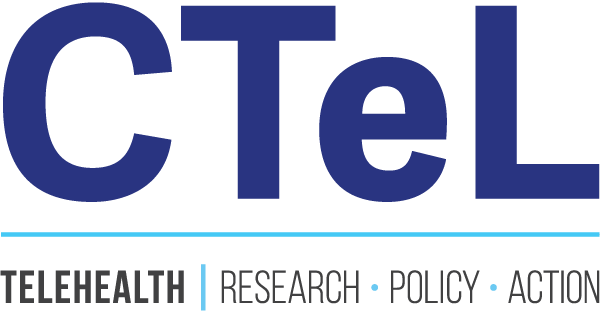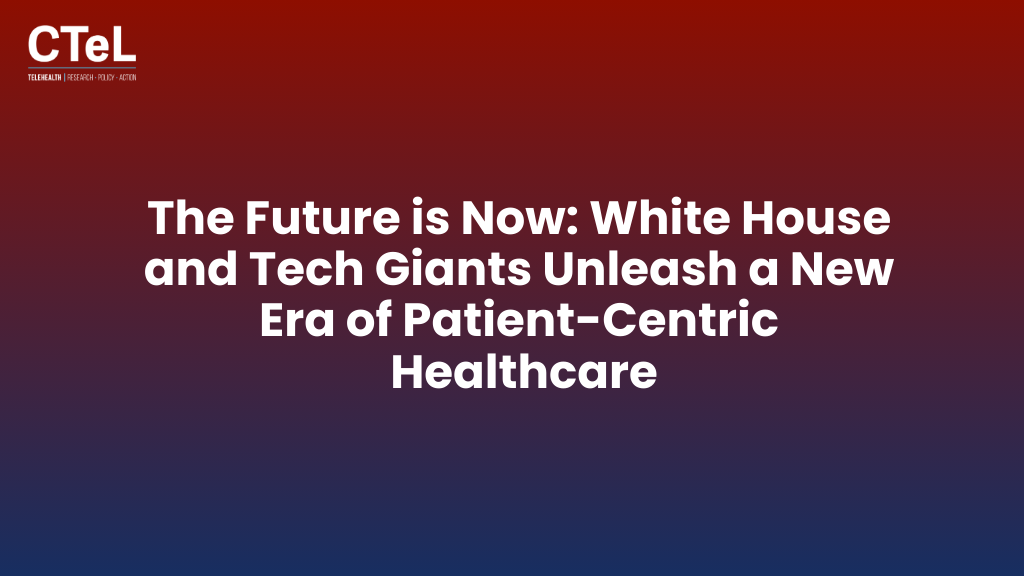The Future is Now: White House and Tech Giants Unleash a New Era of Patient-Centric Healthcare
A landmark announcement from the White House signals a seismic shift in the digital health landscape. The Trump Administration, in a "Make Health Tech Great Again" event, has secured commitments from tech titans like Amazon, Apple, Google, and major healthcare players to build a more interconnected, intelligent, and personalized healthcare system. For those in the digital health, telehealth, and hospital sectors, this isn't just another government initiative. It's a fundamental reshaping of the operational and technological rails upon which healthcare will run.
President Donald Trump stand with CMS Administrator Mehmet Oz and Health Secretary RFK Jr. at an executive order signing on lowering prescription drug prices in May. (Photo by Andrew Harnik/Getty Images)
This blog post breaks down the key takeaways from this announcement, delves into the often-overlooked implications, and provides the data and evidence you need to prepare your organization for the coming changes.
Key Takeaways: What You Need to Know
The core of the initiative revolves around two key pillars: the CMS Interoperability Framework and the proliferation of patient-centric tools. The goal is to dismantle the digital walls that have long siloed patient data, empowering patients and reducing the burden on providers.
Here's a quick rundown of the essential components:
A Unified Framework: Over 60 companies have pledged to work within the CMS Interoperability Framework, with 21 networks committing to become "CMS Aligned Networks." This push for standardization aims to ensure that patient data can flow securely and seamlessly between different electronic health records (EHRs), health information exchanges, and tech platforms.
"Kill the Clipboard": A major focus of the initiative is the elimination of manual data entry and redundant paperwork. Seven EHRs have committed to facilitating data exchange to finally "kill the clipboard," streamlining patient intake and reducing administrative overhead.
A New Generation of Patient Apps: Thirty companies are set to develop tools that leverage this new interoperability to provide tangible health benefits. These include apps for diabetes and obesity management, conversational AI assistants for symptom checking and appointment scheduling, and tools for seamless digital check-in.
Foundational Infrastructure Upgrades: CMS is rolling out a suite of infrastructure enhancements to support this new ecosystem:
An Enhanced Plan Finder for Medicare beneficiaries.
A National Provider Directory built on the FHIR (Fast Healthcare Interoperability Resources) standard.
Modern digital identity verification for Medicare.gov.
Faster Blue Button Data to accelerate patient access to their claims information.
Beyond the Buzz: Overlooked Insights and What They Mean for You
While the headlines are focused on the big names and bold promises, the true significance of this announcement lies in the subtle but profound shifts it will trigger.
1. The End of Siloed Solutions, The Rise of the Ecosystem:
For years, the digital health market has been a fragmented landscape of point solutions. This initiative signals a move away from standalone apps and portals toward a truly integrated digital health ecosystem. For digital health and telehealth companies, this means that success will no longer be determined by the features of a single product, but by its ability to connect and share data with other systems in a secure and patient-centric manner. The CMS-Aligned Networks will become the new standard, and companies that fail to adapt will be left behind.
2. "Kill the Clipboard" is a Workflow Revolution, Not Just a Tech Upgrade:
The "kill the clipboard" mantra is more than just a catchy phrase. It represents a fundamental rethinking of patient intake and administrative workflows. For hospitals and provider organizations, this will require more than just adopting a new piece of software. It will necessitate a top-to-bottom redesign of processes, staff training, and a cultural shift toward a digital-first patient experience. The organizations that succeed will be those that view this as an opportunity for operational transformation, not just a technology implementation.
3. The Devil is in the Data (and the Details):
The press release paints a rosy picture of a seamlessly interconnected future, but the road to interoperability is paved with challenges. As one study on the impact of interoperability notes, "the introduction of increasingly complicated technology into already complex work environments may trigger various unintended interactions that undermine or outweigh the potential benefits" (Lee & Yoon, 2021). The real work will be in the trenches, standardizing data formats, ensuring data quality, and navigating the complexities of data governance.
The Evidence and the Challenges
The promise of this initiative is backed by a growing body of evidence. A systematic review of studies on EHR interoperability found that it has a beneficial effect on reducing patient safety events and improving medication reconciliation (Li et al., 2022). Furthermore, a global multi-stakeholder analysis revealed that over 90% of respondents believe interoperability has a positive impact on patient outcomes (Adel, 2023).
However, the path forward is not without its obstacles. The implementation of digital health technologies in hospitals is often hampered by significant challenges, including:
Data privacy and security concerns
The high cost of implementation and maintenance
The difficulty of integrating new systems with legacy infrastructure
Resistance to change from staff (Calcium Health, 2023)
Provider burden is another critical consideration. While the long-term goal of these initiatives is to reduce administrative tasks, the initial implementation and learning curve can increase the burden on already overworked clinicians. A survey by The Harris Poll revealed that while a majority of physicians are optimistic about the potential of digital health, they are also concerned about the time and effort required to integrate new technologies into their workflows (The Harris Poll, 2023).
Finally, patient adoption remains a key variable. While the use of patient portals and health apps is on the rise, with about 3 in 5 individuals accessing their online medical records in 2022, a significant portion of the population still faces barriers to access and use (Office of the National Coordinator for Health Information Technology, 2023).
Preparing for the Future
The White House's announcement is a clear signal that the future of healthcare is digital, interconnected, and patient-centric. For organizations in the digital health, telehealth, and provider space, the time to prepare is now. This means:
Aligning with the CMS Interoperability Framework: Digital health companies must ensure that their products are built on a foundation of interoperability, with a focus on FHIR-based APIs and secure data exchange.
Investing in User-Centric Design: As patients gain more control over their health data, the demand for user-friendly, intuitive, and valuable applications will only increase.
Rethinking Workflows and Operations: Hospitals and providers need to start planning for the operational changes that will be required to fully leverage this new digital ecosystem.
Addressing Provider Burden: It is crucial to involve clinicians in the design and implementation of new technologies and to provide them with the training and support they need to succeed.
This initiative is more than just a press release; it's a roadmap to a new era of healthcare. The organizations that embrace this change and proactively adapt will be the ones that thrive in the patient-centric healthcare ecosystem of the future.
References
Adel, A. (2023). Evaluating the Impact of Healthcare Interoperability on Patient Outcomes: A Global Multi-Stakeholder Analysis. Texila International Journal of Public Health, 11(2), 1-12.
Calcium Health. (2023). Overcoming the 6 Big Barriers to Digital Health Technology Adoption. Calcium Health.
Lee, S. M., & Yoon, D. (2021). Impact of Electronic Health Record Interoperability on Telehealth Service Outcomes. Journal of Medical Internet Research, 23(1), e23249.
Li, E., Clarke, J., Ashrafian, H., Darzi, A., & Neves, A. L. (2022). The Impact of Electronic Health Record Interoperability on Safety and Quality of Care in High-Income Countries: Systematic Review. Journal of Medical Internet Research, 24(9), e38144.
Office of the National Coordinator for Health Information Technology. (2023). Individuals’ Access and Use of Patient Portals and Smartphone Health Apps, 2022. HealthIT.gov.
The Harris Poll. (2023). Provider and Patient Technology Use Survey. The Harris Poll.


